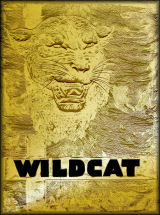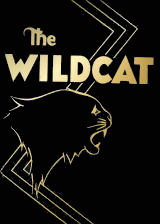|
|
|
|
|
Brigham Young High School History
|
|
The School's Symbols ~
What Do They Represent?
|
|
|
The Beehive
A beehive appeared on the original Brigham Young Academy Deed of Trust in 1875, shown above.
An interpretation of this symbol appeared in an October 11, 1881 article in the Deseret News, stating: "The hive and honey bees form our communal coat of arms. ... It is a significant representation of the industry, harmony, order and frugality of the people, and of the sweet results of their toil, union and intelligent cooperation."
Even down to the present day, the beehive symbol is widely used and understood in LDS culture.
The beehive symbol in Latter-day Saint culture was originally inspired by several verses in the Book of Mormon. Part of the Book tells of an Old Testament people called the Jaredites. These people lived at the time of the Tower of Babel, and they eventually came to the New World.
On their journey to what is now the Americas, they carried with them "deseret", which the book interprets as "honey bee". The account says they carried to the promised land "swarms of bees". Consequently, the word deseret is associated with a beehive symbol.
When Latter-day Saint pioneers arrived in the Salt Lake Valley in July of 1847, they found few resources and were forced to rely on their own industry, and to cooperate extensively with each other to survive the harsh, primitive living conditions. The region settled by these first pioneers was originally named the Deseret Territory, and the beehive was chosen as its emblem.
When he visited Utah during his Roughing It travels through the American West in the 1860s, author Samuel Clemens (Mark Twain) commented on the symbol: "The Mormon crest was easy. And it was simple, unostentatious and it fitted like a glove. It was a representation of a Golden Beehive, with all the bees at work."
During the mid- to late-1800s, Church leaders and members incorporated the beehive image extensively in the exterior and interior design of buildings such as the historic Salt Lake Temple and Brigham Young’s home -- the Beehive House. The beehive is also the symbol of the State of Utah, and is included on both the state seal and the state flag. The state nickname is -- of course -- the "Beehive State."
|
|
|
|
The Y
Brigham Young, the second president of the Church of Jesus Christ of Latter-day Saints, founded Brigham Young Academy (BYA) in 1876 in Provo, Utah. In 1903, Brigham Young Academy was dissolved, and replaced by Brigham Young High School (BYH) and Brigham Young University (BYU).
Rivalries between the various high school classes led them to graffiti their class names on buildings, water towers, and even on the nearby mountain. These rivalries, which posed a threat to the peace of the school and community, were considered to be a serious challenge by both high school and university administrators.
The faculty came forward with a suggestion that they hoped would unite rather than divide the classes. What if the letters B, Y and U were painted on the mountain, and all of the classes could participate side by side by carrying bags of white lime, climbing the mountain, and whitewashing the giant letters.
By working together, they reasoned, emotions could be kept in check to avoid vandalism and violence.
Preparations for placing the school’s initials on the mountainside began in April of 1906 when President George H. Brimhall commissioned surveys for the letters B, Y, and U. The letter "Y" was laid out first to insure that the initials would be properly centered on the mountain.
When the outlines were complete, the center letter "Y" measured 322 feet in height and 120 feet in width. The school purchased 380 acres on the face of the big mountain east of the Upper Campus, extending clear to the top of the mountain, for the project.
It was a much bigger job than anyone expected. After one whole grueling day of work, only the Y was covered with a thin layer of lime, so no attempt was made to cover the other two letters. Their work on the mountainside from the valley floor was a reward in itself to the students – the beautiful white Y looked like it was standing in the air just above the ground.
The original Y consisted of only a fragile layer of powder, and was in constant need of repair. Students showed their loyalty to their class and to the school by climbing the mountain each year to give the Y a fresh coat of lime.
|
|
|
This tradition lasted for over six and a half decades. Beginning in 1972, the letter was whitewashed with the aid of a helicopter to reduce erosion problems on the mountainside.
The Y on the mountainside quickly became a national symbol of the school, and the university is often referred to as the “Y”. Brigham Young High School gained the nickname “Y High”. Why does the letter “Y” appear on the official crest of BYH? Now you know why.
|
|
|
Wildcats
In 1926, the BY High School basketball team adopted the name Wild Cats.
Legendary BYU coach Eugene L. Roberts, who started at BYU in 1910 and became head of the Athletic Department, had earlier dubbed all of BYU's sports teams the "Cougars", and the name Wild Cats was a natural choice for the high school mascot.
Coach Roberts often selected good B.Y. High School athletes and played them on BYU teams. For example, see Alma Richards. Roberts continued as head coach at BYU until 1928, when he became head coach as the University of Southern California (USC).
From the early 1930's to 1968, the BYH yearbook was known as the "Wildcat" and for many years the student newspaper was called the "Y'ld Cat".
|
|
|
|
 |
A variety of Wildcat images served as BYH school logos before and after the approval of an official crest in 1956. |
 |
|
|
|
|
|
|
|
The Crest
A new Brigham Young High School crest, topped with a beehive and incorporating the Wildcat mascot, was created during the 1955-56 school year. It was partially designed by BYH Principal Morris A. Shirts, and completed by Wallace M. Mangum, Jr., Class of 1956. Wally Mangum was a thespian and illustrator for the 1956 Wildcat yearbook. Born on June 24, 1938, Mangum died August 4, 1991 at the age of 53.
|
|
|
Roland Clark, Class of 1957, wrote a winning essay on the meaning of the new Crest design. He was complimented in the 1956 Wildcat yearbook because his essay "caught the spirit of our school". The essay was published in the 1957 Wildcat yearbook:
|
|
|
"To me the most important element represented on our new school crest is Uniti Stetimus, or United We Stand. This is the ultimate desire which exists in the minds of our principal, our faculty, and our elected officers: to instill in our minds that same desire for unity which we as high school students at B.Y. High will, and are receiving, from the design of this beautiful Coat of Arms.
|
|
|
"United We Stand in industry, as shown by the beehive at the top of the crest, for B.Y. High is an eternal door to the future, preparing the citizens of tomorrow.
|
|
|
"United We Stand in the spirit of the Y, displayed so well in our various activities: at athletic events, at speech meets, at music fests, and all the other activities which make the memory of B.Y. High choice in the minds of those who have gone before.
|
|
|
"United We Stand in historical events and traditions which illuminate Brigham Young High School, founded upon the principles of righteousness, established with the memories, fresh in the minds of the founders, of our pioneer forefathers who gave so much that we might live, learn and worship as we feel to be right.
|
|
|
"The Wildcat emblem shows that United We Stand in determined effort to overcome and complete the task which is at hand, to never say that a job is done until the hopes and expectation of all are satisfied and the finishing touches proudly and efficiently done.
|
|
|
"The torch of learning testifies that truly United We Stand in learning the truths of the Gospel of Jesus Christ, which is the sum of all truth, the truth that will make us free.
|
|
|
"And now, with the colors of the past, blue and white, and the colors of the present, gold and gray, and with the high ideals and standards of the Brigham Young High School, we the students of that noble institution will eagerly face the color and brilliance of the future."
~~Roland Clark '57
|
|
|
|
|
Special thanks to the family of Principal Morris A. Shirts for sharing the above scan of the embroidered BYH crest that Principal Shirts saved in his personal effects. Click on the graphic for a larger version.
|
|
|
|
|
|
|
|
|
|

